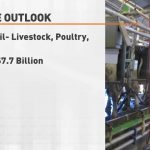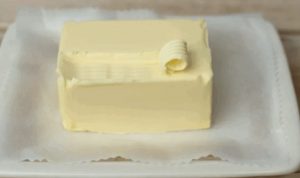
The latest New Zealand Dairy Statistics report – also known as “the cow census” – showed the number of milking cows dipped slightly in the 2020-21 season.
But despite shrinking from 4.92 million to 4.9 million animals, the herd produced a record 1.95 billion kilograms of milk solids (kgMS).
Total milk volume and per cow production were also the highest on record, according to the report from Livestock Improvement Corporation (LIC) and DairyNZ.
DairyNZ chief executive Dr Tim Mackle said the continuation of the “more milk from fewer cows trend” showed an ongoing focus on milking better cows and farming more sustainably.

“Farmers are focused on developing more productive and efficient cows and farming systems, with a lighter environmental footprint.
“They want to retain our unique pasture-based farming system and remain world leading.”
Favourable weather conditions also contributed to good grass growth, while higher milk prices meant many farmers extended their milking season.
The percentage of cows mated to artificial breeding (AB) rose to 71.3 per cent (up from 70.8 per cent in 2019-20), and the number of cows herd tested is the highest on record (3.735 million cows, or 76.2 per cent of the national herd).
Herd testing enables farmers to monitor and improve the quality and productivity of their herds.
LIC acting chief executive David Hazlehurst said the greater uptake of herd improvement services showed farmers were focused on producing the most sustainable and efficient animals.
“With a focus on cow quality over quantity, more farmers are investing in premium genetics to help ensure their next generation of replacements are more efficient than the last.”
Hazlehurst said young, genomically-selected bulls and sexed semen, which generates female calves from top cows, are examples of the high-impact tools farmers are adopting to increase the rate of genetic gain in their herds.

“It’s really pleasing to see these stats provide farmers with reassurance that the tools they’re investing in to increase their herd’s production efficiency and reduce their farm’s environmental footprint are working,” he said.
“Increasing milk solids with a reduced cow population is an achievement the whole sector should be proud of.”
Mackle said dairy played a key role in New Zealand, employing around 50,000 people and estimated to contribute more than $37 billion to the economy in 2020-21.
Key statistics from the New Zealand Dairy Statistics 2020-21 report
- The dairy sector produced 21.7 billion litres of milk containing 1.947 billion kgMS – a 2.6 per cent increase in litres and a 2.7 per cent increase in kgMS processed.
- Average milk production per cow was 397kgMS, a 3.1 per cent increase from 385kgMS last season and the highest on record.
- The total cow population was 4.9 million, a small decrease of 0.36 per from the previous season.
- A total of 3.735 million cows were herd tested (76.2 per cent of cows), the highest number on record.
- 3.497 million cows were mated to AB. The percentage of cows mated to AB was 71.3 per cent, which was higher than the previous season (70.8 per cent).
- The average dairy co-operative payout of $7.75 per kgMS was higher than the previous season ($7.20) and the second-highest average payout in the past 10 seasons.

























